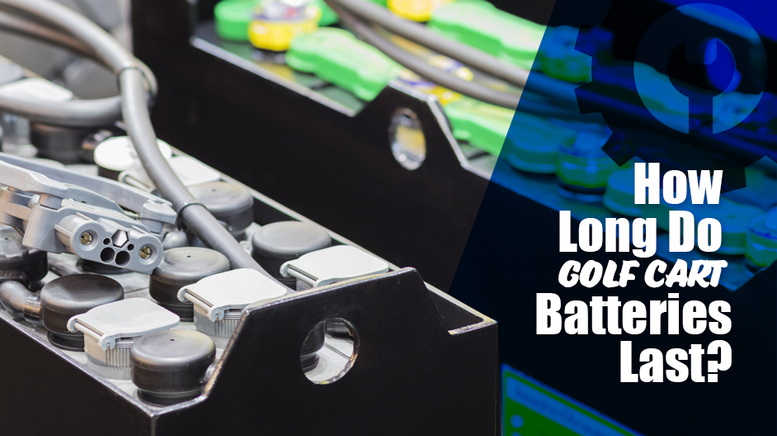Content Menu
● Types of Golf Cart Batteries
>> Lead-Acid Batteries
>> Lithium-Ion Batteries
● Average Lifespan of Golf Cart Batteries
>> Lead-Acid Batteries
>> Lithium-Ion Batteries
● Factors Affecting Battery Lifespan
>> Usage Patterns
>> Charging Habits
>> Maintenance
>> Temperature and Storage Conditions
>> Battery Quality
● Maximizing Battery Life: Best Practices
>> Regular Charging
>> Proper Water Levels
>> Clean Connections
>> Avoid Overcharging
>> Temperature Control
>> Regular Inspections
● Signs It's Time to Replace Your Batteries
● Lithium-Ion vs. Lead-Acid: A Comparison
>> Lithium-Ion Advantages:
>> Lead-Acid Advantages:
● The Impact of Technology on Battery Life
● Environmental Considerations
● Cost Considerations
● The Future of Golf Cart Batteries
● Conclusion
● Frequently Asked Questions
>> 1. How often should I charge my golf cart batteries?
>> 2. Can I use car batteries in my golf cart?
>> 3. How do I know when it's time to replace my golf cart batteries?
>> 4. Are lithium-ion batteries worth the higher cost for golf carts?
>> 5. How should I store my golf cart during the off-season to protect the batteries?
Electric golf carts have become increasingly popular in recent years, offering a quiet and eco-friendly alternative to traditional gas-powered carts. One of the most crucial components of these vehicles is their battery system. Understanding the lifespan of electric golf cart batteries is essential for owners and operators to ensure optimal performance and longevity. In this comprehensive guide, we'll explore the factors that influence battery life, maintenance tips, and what to expect from different types of golf cart batteries.

Types of Golf Cart Batteries
Before delving into battery lifespan, it's important to understand the different types of batteries commonly used in electric golf carts:
Lead-Acid Batteries
Lead-acid batteries are the most traditional and widely used type in golf carts. They come in two main varieties:
1. Flooded Lead-Acid Batteries
2. Sealed Lead-Acid Batteries (including AGM and Gel)
Lithium-Ion Batteries
Lithium-ion batteries are a more recent addition to the golf cart market, offering several advantages over lead-acid batteries.
Average Lifespan of Golf Cart Batteries
The lifespan of golf cart batteries can vary significantly depending on several factors. However, here are some general guidelines:
Lead-Acid Batteries
- Flooded Lead-Acid: 4-6 years
- Sealed Lead-Acid (AGM/Gel): 5-7 years
Lithium-Ion Batteries
- 8-10 years or more
It's important to note that these are average lifespans, and actual battery life can be longer or shorter based on various factors.
Factors Affecting Battery Lifespan
Several key factors influence how long your golf cart batteries will last:
Usage Patterns
The frequency and intensity of use play a significant role in battery life. Golf carts used daily or for multiple rounds per day will typically have shorter battery lifespans compared to those used less frequently.
Charging Habits
Proper charging is crucial for maximizing battery life. Overcharging or undercharging can significantly reduce the lifespan of your batteries.
Maintenance
Regular maintenance, including cleaning terminals, checking water levels (for flooded lead-acid batteries), and ensuring proper electrolyte levels, can extend battery life.
Temperature and Storage Conditions
Extreme temperatures, both hot and cold, can negatively impact battery performance and lifespan. Proper storage during off-seasons is essential.
Battery Quality
Investing in high-quality batteries from reputable manufacturers can lead to longer lifespans and better overall performance.

Maximizing Battery Life: Best Practices
To get the most out of your golf cart batteries, follow these best practices:
Regular Charging
Charge your batteries after each use, even if they're not fully depleted. For lead-acid batteries, avoid deep discharges whenever possible.
Proper Water Levels
For flooded lead-acid batteries, maintain proper water levels by adding distilled water when necessary. Never let the plates become exposed.
Clean Connections
Keep battery terminals and connections clean and free from corrosion. Use a mixture of baking soda and water to clean terminals if corrosion occurs.
Avoid Overcharging
Use a smart charger that automatically shuts off when the batteries are fully charged to prevent overcharging.
Temperature Control
Store your golf cart and batteries in a temperature-controlled environment when possible, especially during extreme weather conditions.
Regular Inspections
Perform regular visual inspections of your batteries, looking for signs of damage, leakage, or swelling.
Signs It's Time to Replace Your Batteries
Even with proper care, all batteries eventually need replacement. Look out for these signs:
1. Decreased range or performance
2. Longer charging times
3. Visible damage or swelling
4. Frequent need for water (in flooded lead-acid batteries)
5. Age (if your batteries are approaching or exceeding their expected lifespan)
Lithium-Ion vs. Lead-Acid: A Comparison
While lead-acid batteries have been the standard for golf carts for many years, lithium-ion batteries are gaining popularity. Here's a comparison:
Lithium-Ion Advantages:
- Longer lifespan (8-10 years or more)
- Lighter weight
- Faster charging
- Maintenance-free
- Better performance in cold weather
Lead-Acid Advantages:
- Lower initial cost
- Widely available
- Familiar technology for most users
The Impact of Technology on Battery Life
Advancements in battery technology continue to improve the lifespan and performance of golf cart batteries. Some notable developments include:
1. Smart Battery Management Systems (BMS)
2. Improved cell chemistry in lithium-ion batteries
3. Enhanced charging algorithms
4. Better manufacturing processes for lead-acid batteries
These technological improvements contribute to longer-lasting, more efficient batteries for electric golf carts.
Environmental Considerations
When considering battery lifespan, it's also important to think about environmental impact. Longer-lasting batteries mean fewer replacements and less waste. Additionally, proper recycling of old batteries is crucial for minimizing environmental harm.
Cost Considerations
While the initial cost of batteries, especially lithium-ion, can be significant, it's important to consider the total cost of ownership over time. Factors to consider include:
1. Initial purchase price
2. Expected lifespan
3. Maintenance costs
4. Energy efficiency
5. Potential resale value of the golf cart
In many cases, investing in higher-quality batteries with longer lifespans can be more cost-effective in the long run.
The Future of Golf Cart Batteries
As technology continues to advance, we can expect to see further improvements in golf cart battery technology. Some potential developments include:
1. Even longer-lasting lithium-ion batteries
2. New battery chemistries with improved performance
3. More efficient charging systems
4. Integration with renewable energy sources for charging
These advancements will likely lead to even longer battery lifespans and improved overall performance for electric golf carts.
Conclusion
The lifespan of electric golf cart batteries can vary significantly based on numerous factors, including battery type, usage patterns, maintenance, and environmental conditions. While lead-acid batteries typically last 4-7 years, lithium-ion batteries can often exceed 8-10 years with proper care. By understanding the factors that influence battery life and following best practices for maintenance and charging, golf cart owners can maximize the lifespan of their batteries and ensure optimal performance for years to come.
As technology continues to advance, we can expect to see even longer-lasting and more efficient batteries in the future. Whether you choose traditional lead-acid batteries or opt for the newer lithium-ion technology, proper care and attention to your golf cart's power source will result in a more enjoyable and reliable golfing experience.

Frequently Asked Questions
1. How often should I charge my golf cart batteries?
It's best to charge your golf cart batteries after each use, even if they're not fully depleted. This practice helps maintain battery health and prevents deep discharges that can shorten battery life.
2. Can I use car batteries in my golf cart?
While it's technically possible, it's not recommended. Golf cart batteries are designed for deep-cycle use, whereas car batteries are meant for short bursts of high power. Using car batteries in a golf cart will likely result in poor performance and a much shorter lifespan.
3. How do I know when it's time to replace my golf cart batteries?
Look for signs such as decreased range, longer charging times, visible damage or swelling, and the age of the batteries. If your batteries are approaching or exceeding their expected lifespan and showing performance issues, it's likely time for a replacement.
4. Are lithium-ion batteries worth the higher cost for golf carts?
While lithium-ion batteries have a higher upfront cost, they often prove to be cost-effective in the long run due to their longer lifespan, better performance, and lower maintenance requirements. For frequent users or those looking for top performance, lithium-ion batteries can be a worthwhile investment.
5. How should I store my golf cart during the off-season to protect the batteries?
For off-season storage, fully charge the batteries, disconnect them (for lead-acid), and store the cart in a cool, dry place. For lithium-ion batteries, follow the manufacturer's recommendations, which may include partial charging. Periodically check and charge the batteries during long-term storage to maintain their health.










































